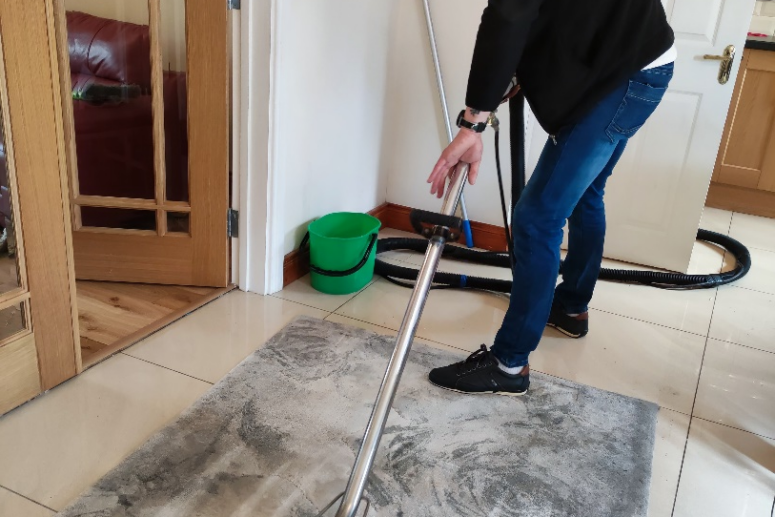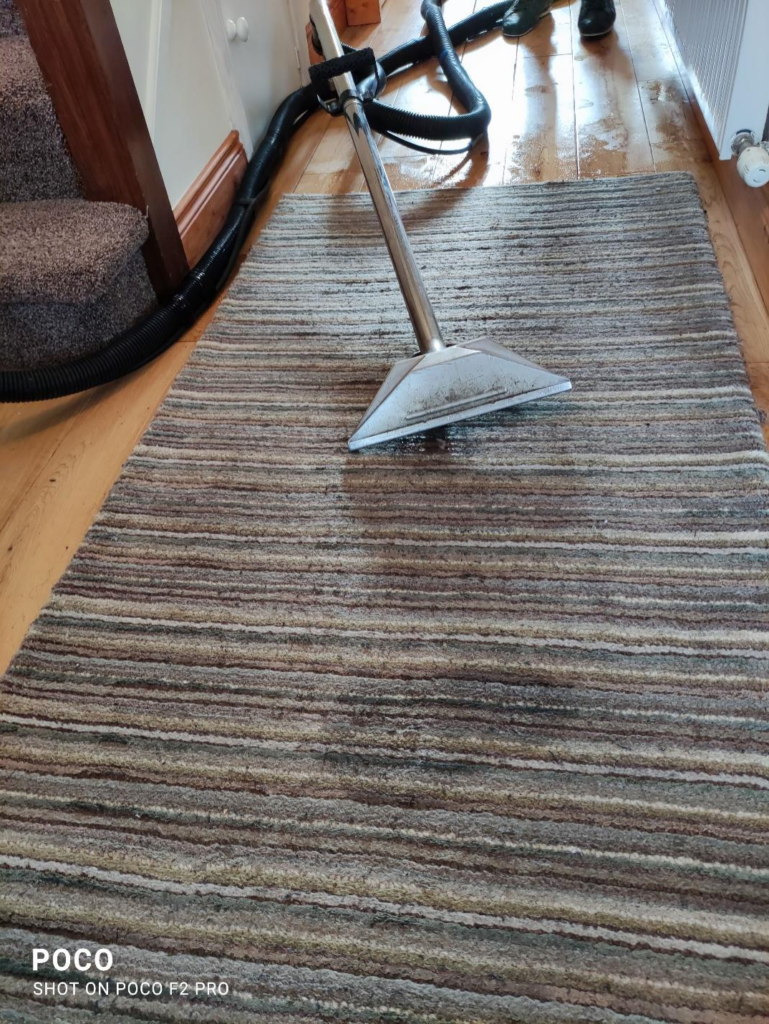
Carpets are a comfortable and luxurious addition to any home, but they also require regular cleaning to maintain their appearance and longevity. With various cleaning methods available, it’s essential to choose the right one based on your carpet type, level of soiling, and personal preferences. In this guide, we’ll explore different carpet cleaning methods and help you determine which one is best suited for your home.
Understanding Different Carpet Cleaning Methods
1. Steam Cleaning (Hot Water Extraction)
Steam cleaning, also known as hot water extraction, is one of the most popular and effective carpet cleaning methods. It involves using hot water and cleaning solutions to agitate the carpet fibres, followed by extraction to remove dirt, allergens, and stains.
Pros:
- Deep cleaning that removes embedded dirt and grime.
- Effective for removing stains and odours.
- Suitable for most carpet types, including synthetic and wool.
Cons:
- Longer drying time compared to other methods.
- Requires professional equipment for optimal results.
Dry Carpet Cleaning
Dry carpet cleaning methods use minimal moisture, making them ideal for carpets that cannot withstand excessive water. One common dry cleaning method is using absorbent compounds or powders that are spread over the carpet, agitated, and then vacuumed to lift dirt and stains.
Pros:
- Quick drying time, making it suitable for busy households.
- There is no risk of over-wetting or water damage.
- In some cases, it can be done without professional equipment.
Cons:
- May not be as effective for deep cleaning heavily soiled carpets.
- Some residues from the cleaning compounds may remain.

3. Bonnet Cleaning
Bonnet cleaning is a surface-cleaning method commonly used in commercial settings. It involves applying a cleaning solution to the carpet, then using a rotary floor machine with a bonnet pad to absorb dirt and grime.
Pros:
- Fast cleaning process, suitable for high-traffic areas.
- Can improve carpet appearance between deeper cleanings.
- Relatively low cost compared to other methods.
Cons:
- Not as effective for deep cleaning or removing embedded dirt.
- May cause carpet fibres to become compressed over time.
4. Encapsulation Cleaning
Encapsulation cleaning uses specialized cleaning solutions that crystallize and encapsulate dirt particles, which are then vacuumed away. This method is often used for maintenance cleaning or interim cleaning between more intensive deep cleanings.
Pros:
- Low-moisture process with quick drying times.
- Can help prolong the time between deep cleanings.
- Environmentally friendly with fewer chemicals.
Cons:
- May not be suitable for heavily soiled carpets or deep stains.
- Requires proper vacuuming to remove encapsulated particles completely.
Factors to Consider When Choosing a Cleaning Method
1. Carpet Type:
Consider the material of your carpet when choosing a cleaning method. For example, wool carpets may require gentler cleaning methods to avoid damage, while synthetic carpets are more durable and can withstand deeper cleaning processes.
2. Level of Soiling:
Determine how heavily soiled your carpet is. For carpets with deep-seated dirt, stains, or odours, methods like steam cleaning or deep extraction may be necessary. Lightly soiled carpets may benefit from dry or encapsulation cleaning.
3. Drying Time:
Consider the drying time required by different cleaning methods. Steam cleaning and deep extraction methods may result in longer drying times, which can be inconvenient for households with limited downtime.
4. Environmental Concerns:
If you’re conscious of your environmental impact, opt for cleaning methods that use fewer chemicals and water. Dry cleaning methods and encapsulation cleaning are often considered more environmentally friendly than traditional steam cleaning.
5. Budget and Convenience:
Evaluate your budget and the convenience of each cleaning method. While professional steam cleaning may offer the deepest clean, it can be more expensive than DIY dry cleaning methods or interim maintenance cleanings.
DIY vs. Professional Cleaning
Deciding whether to clean your carpets yourself or hire a professional service depends on several factors:
-
DIY Cleaning:
- Cost-effective for small areas or routine maintenance.
- Requires renting or purchasing equipment and cleaning solutions.
- May not achieve the same results as professional cleaning for heavily soiled carpets.
-
Professional Cleaning:
- Provides thorough, deep cleaning with professional-grade equipment.
- It saves time and effort, especially for larger carpeted areas.
- Ensures proper handling of delicate carpets and tough stains.
Maintenance Tips for Clean Carpets
Regardless of the cleaning method you choose, here are some maintenance tips to keep your carpets looking fresh:
- Vacuum regularly to remove surface dirt and debris.
- Attend to spills and stains promptly to prevent them from
- Use doormats at entryways to reduce the amount of dirt tracked onto carpets.
- Schedule professional deep cleanings at least once or twice a year, depending on foot traffic and usage.
Conclusion
Choosing the best carpet cleaning technique requires taking into account a number of variables, including the kind of carpet, the degree of soiling, the drying time, the influence on the environment, the budget, and the convenience of Sandyford Carpet Cleaning. Regular maintenance, whether by steam cleaning, dry cleaning, or other techniques, is essential for maintaining the beauty and durability of your carpets. Understanding different cleaning processes and their suitability for your unique needs can allow you to enjoy clean, comfy carpets in your house for many years.
